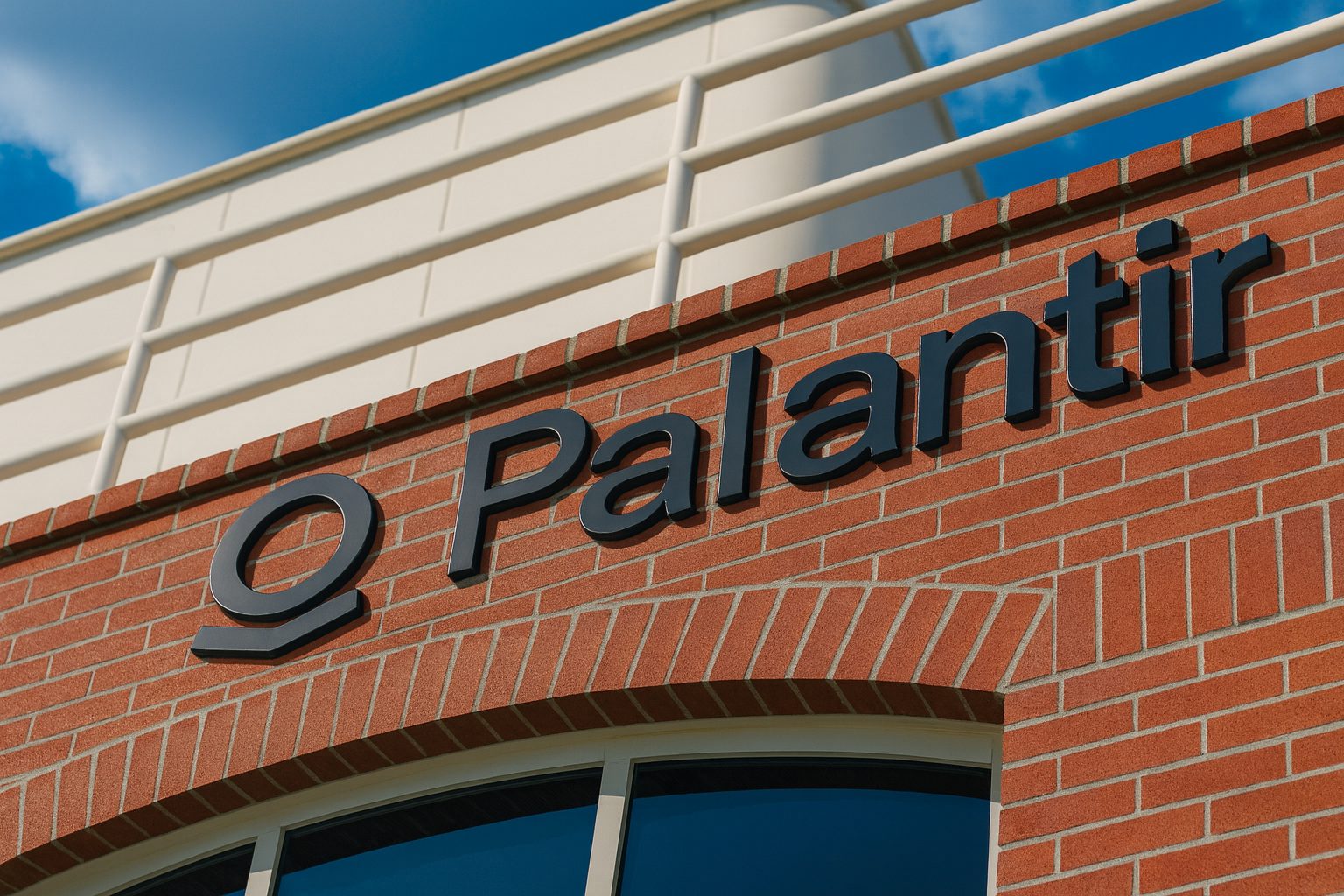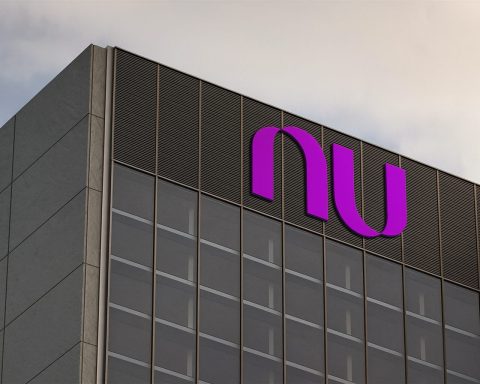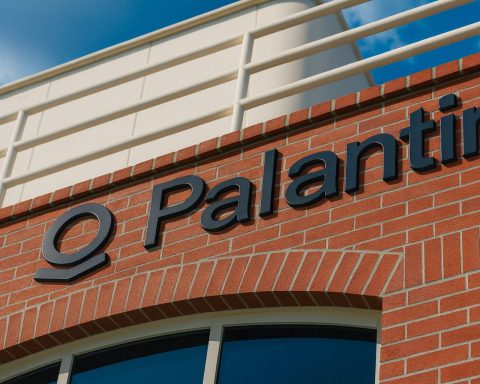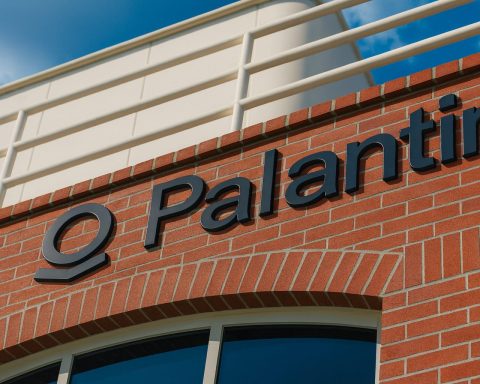Palantir Technologies Inc. (NYSE: PLTR) is trading slightly higher today after a bruising November, as investors digest fresh AI deals, high‑profile fund moves and increasingly vocal warnings about valuation.
As of early afternoon on November 26, 2025, Palantir shares trade around $164–165, up less than 1% on the day. That leaves the stock well below its recent peak but still near record territory, with a market cap close to $390 billion and a trailing price‑to‑earnings ratio in the high 300s, according to recent MarketBeat and AInvest data. [1]
Over the last year, Palantir has swung between roughly $63 and $207 per share, underscoring the extreme volatility that now surrounds one of Wall Street’s most controversial AI names. [2]
Palantir stock today: stabilizing after a sharp November pullback
Despite today’s modest bounce, Palantir is still working through a meaningful pullback. A fresh 24/7 Wall St. piece notes that the stock is: [3]
- Down more than 21% since its all‑time high on November 3, 2025
- Still up ~117% in 2025 year to date
- Up more than 1,600% since its 2020 IPO
At the same time, MarketBeat data shows: [4]
- 12‑month low: ~$63.40
- 12‑month high: ~$207.52
- 50‑day moving average: around $180
- 200‑day moving average: around $159
- Beta: about 2.6, reflecting outsized volatility
Analysts remain cautious. MarketBeat’s aggregation points to a consensus “Hold” rating, with an average price target near $172, only modestly above today’s price. [5]
New PwC UK deal reinforces Palantir’s enterprise AI push
On the corporate side, Palantir and PwC UK announced today an expanded multi‑year alliance that includes a multi‑million‑pound investment in joint AI and data solutions. [6]
Key points from the announcement:
- PwC UK will remain a preferred partner for deploying Palantir’s Foundry and AI Platform (AIP) to major UK public‑ and private‑sector clients.
- The deal builds on earlier collaborations, including work on the NHS Federated Data Platform and UK defense projects. [7]
- The partnership explicitly targets “enterprise‑grade AI” rollouts, signaling that Palantir is leaning heavily into consulting and systems‑integration partners rather than going it alone.
Strategically, the extension matters because several recent analyses – including pieces from AInvest and Trefis – argue that international commercial AI adoption is one of the most important next‑leg growth drivers for Palantir. [8]
ARK Invest trims Palantir, rotates cash into Alphabet
On the fund‑flow side, Cathie Wood’s ARK Invest is again taking profits in Palantir.
In its daily trade disclosure for November 26, 2025, ARK reported selling 354,955 PLTR shares, worth about $58 million, while buying roughly 174,000 shares of Alphabet (GOOG) valued at around $56.4 million. [9]
This follows a series of prior PLTR trims from ARK earlier in the month, reinforcing the idea that one of Palantir’s most visible champions is now re‑balancing away from the name, even as the broader AI trade remains intact.
Combined with prior reports that major institutions such as JPMorgan and T. Rowe Price have reduced their Palantir stakes in recent quarters, institutional positioning looks increasingly split: some funds are still initiating new positions, while earlier believers are quietly scaling back. [10]
Michael Burry’s puts: a high‑profile bet against Palantir
Adding to the tension, Michael Burry – the investor made famous by The Big Short – is openly betting against Palantir.
In a new Business Insider report published today, Burry revealed on his Substack that he holds put options on both Nvidia and Palantir, framing them as beneficiaries of what he views as an emerging AI bubble. [11]
Key takeaways from the report:
- Burry criticizes parts of the AI ecosystem for overstating the longevity of current‑generation chips and infrastructure.
- He argues that hardware used to train and run AI models may become functionally obsolete faster than the market assumes, creating future write‑down risks. [12]
- Regulatory filings show that his combined Nvidia and Palantir put positions previously had a notional value of around $1.1 billion, though Burry says the actual cost to him was closer to $10 million per position. [13]
For Palantir shareholders, Burry’s stance doesn’t change the company’s fundamentals, but it amplifies the narrative risk: a growing chorus of prominent investors now argue that AI leaders like PLTR are priced for perfection – or worse.
Mixed signals from institutions and insiders
While some high‑profile investors are trimming or shorting, others continue to buy.
A new MarketBeat alert today highlighted that Viawealth LLC disclosed a new Palantir position in Q2 2025, purchasing about 1,632 shares worth roughly $222,000. The same report notes that a number of other wealth managers and institutions have also increased their exposure in recent quarters, with overall institutional ownership around 45–55%, depending on the source. [14]
At the same time, insider activity leans clearly to the sell side: [15]
- Insider Ryan D. Taylor sold just over 36,000 shares in September at an average price near $158.
- Insider Stephen Andrew Cohen sold about 308,000 shares on November 20 at roughly $164, reducing his holdings by nearly 99%.
- Across the last three months, insiders have unloaded roughly 1.15 million shares, worth around $187 million at the time of sale.
AInvest’s valuation piece further notes that roughly 1.15 million insider shares changed hands over three months – echoing the MarketBeat tally – and stresses that this selling is fueling scrutiny of Palantir’s lofty valuation multiples. [16]
Technical picture: bulls eye $175–$200, support near $143
From a chart‑based perspective, today’s action looks like a tentative rebound inside a wider consolidation.
An FXEmpire note published this afternoon says Palantir “looks like it is going to try to rally during the day,” with resistance around the 50‑day EMA near $175.28 and potential upside targets in the $180–$200 zone if that level breaks. The 200‑day EMA around $143 is flagged as an important area of downside support. [17]
Meanwhile, a fresh ChartMill screen – based on Louis Navellier’s “Little Book That Makes You Rich” growth system – ranks Palantir as a top growth stock, citing: [18]
- Average EPS beats of ~14.9% over the last four quarters
- Quarterly sales growth of ~63% versus a year ago
- Free cash flow up ~278% over the past year
- Return on equity of ~16.6%
ChartMill assigns Palantir a 10/10 growth rating, strong profitability and balance sheet scores – but only 2/10 on valuation, highlighting just how stretched the stock looks on traditional metrics. [19]
Fundamentals: record Q3, massive contracts and AI momentum
Underneath the volatility, Palantir’s recent financial performance has been undeniably strong.
Q3 2025 results (reported on November 3) showed: [20]
- Revenue: $1.18 billion, up ~63% year over year and 18% sequentially
- U.S. commercial revenue: up 121% YoY, to roughly $397 million
- Government revenue growth: around 52% YoY
- Adjusted operating margin: about 51%
- Adjusted free cash flow: roughly $540 million for the quarter, pushing trailing 12‑month FCF to around $2 billion
CEO Alex Karp described the quarter as among the strongest ever seen for a software company, while executives highlighted 204 deals over $1 million and 53 deals over $10 million, driven by rapid adoption of Palantir’s Artificial Intelligence Platform (AIP). [21]
On guidance, Reuters reports that Palantir now expects Q4 2025 revenue of $1.327–$1.331 billion, well above prior analyst estimates of about $1.19 billion, even though that implies a slight deceleration in growth to roughly 61% YoY from Q3’s 63%. Full‑year 2025 revenue guidance was lifted for the third time this year, to around $4.4 billion. [22]
AInvest and Trefis note that: [23]
- Palantir holds about $6.4 billion in cash, with a strong current ratio and no pressing liquidity issues.
- Last‑twelve‑month revenue growth is near 47%, with a roughly 46% free‑cash‑flow margin – levels far above typical software peers.
- About 55% of revenue still comes from government clients, supported by a $10 billion, 10‑year U.S. Army contract and a £1.5 billion UK Ministry of Defence deal.
This combination of high growth, fat margins and huge multi‑year contracts is the core of the bull case for Palantir stock.
Valuation debate: “premium” or “priced for perfection”?
Today’s news flow has also sharpened a long‑running debate: is Palantir’s premium valuation justified – or has the stock run far ahead of fundamentals?
Across several pieces published today: [24]
- AInvest pegs Palantir’s market cap around $386–390 billion with a P/E near 380 – far above mega‑cap peers but somewhat in line with other hyper‑growth software names like Datadog.
- Trefis estimates a P/E of roughly 355x, versus an S&P 500 median near 23x; last‑twelve‑month revenue growth (~47%) and free‑cash‑flow margin (~46%) are highlighted as justifying at least part of that premium. [25]
- ChartMill assigns Palantir a 7/10 overall fundamental score but explicitly flags valuation as the key weak spot. [26]
- Multiple Seeking Alpha contributors argue that Palantir is effectively “priced for perfection,” with one analysis suggesting it would take a decade of uninterrupted high growth to fully justify current multiples. [27]
The 24/7 Wall St. forecast published this morning goes further, setting a 12‑month price target of $107, implying roughly 35% downside from current levels. The authors acknowledge Palantir’s dominant position in AI and defense but argue that moderating growth rates and falling AI infrastructure costs could compress margins and multiples over time. [28]
Layer in Burry’s puts and sizeable insider selling, and it’s clear why valuation risk is front‑and‑center in today’s conversation around PLTR.
Palantir vs. Rocket Lab: defense AI vs. space hardware
One of today’s more thematic comparisons comes from AInvest, which pits Palantir against Rocket Lab (RKLB) as “defense‑space” plays. [29]
The article’s verdict:
- Palantir delivers 63% revenue growth and ~28% net margins, with deeply embedded government software and analytics platforms (Foundry, Gotham, AIP).
- Rocket Lab shows ~48% revenue growth but still posts ~$190 million in annual losses, heavily dependent on the future success of its Neutron rocket program.
- Palantir’s recurring software revenue and ecosystem integrations are seen as structurally less risky than Rocket Lab’s capital‑intensive launch business.
For investors, the piece frames Palantir as a more mature, cash‑generative defense AI franchise, while Rocket Lab is cast as a high‑beta hardware bet on the broader space economy.
How November 26’s headlines frame the Palantir story
Putting today’s price action and news together, several themes stand out for Palantir stock:
- Fundamentals remain extremely strong.
Q3 delivered blockbuster growth, expanding margins and enormous free cash flow, with guidance pointing to continued 60%+ revenue growth into Q4. The new PwC UK alliance strengthens Palantir’s push into large‑scale enterprise AI deployments outside the U.S. [30] - Valuation is the main fault line.
Across AInvest, Trefis, ChartMill, 24/7 Wall St., and Seeking Alpha, virtually all analysts agree that Palantir trades at a dramatic premium to the broader market – the disagreement is whether its AI moat and growth justify that premium or not. [31] - “Smart money” is split.
- ARK Invest is cutting back its PLTR stake again.
- Michael Burry is publicly short via puts.
- Some big institutions have trimmed holdings, while others (like Viawealth and several wealth managers) are building positions.
- Inside the company, recent months have seen heavy insider selling, even as business performance accelerates. [32]
- Technical backdrop is constructive but fragile.
If bulls can push PLTR back above $175, technicians see room toward $180–$200; a failure that sends the stock back toward the 200‑day EMA near $143 would strengthen the bearish “over‑owned AI bubble” narrative. [33] - Macro and policy still matter.
Palantir’s largest contracts are anchored in U.S. and allied defense and government spending. 24/7 Wall St. emphasizes that the current administration’s focus on defense, security and government “efficiency” remains a tailwind – but also a concentration risk if political priorities shift. [34]
What investors might watch next
For readers following Palantir stock (PLTR) after today’s session, several upcoming catalysts could influence where shares go from here:
- Execution of the U.S. Army and UK MoD megadeals, and whether they translate into sustained 50–60%+ revenue growth rather than a one‑off surge. [35]
- Adoption of AIP and ontology‑driven AI solutions across commercial sectors like healthcare, finance, manufacturing and telecom. [36]
- The pace of international expansion, including deeper work with partners like PwC UK and potential deals in Europe and Asia. [37]
- Any shift in institutional flows, especially if ARK, large asset managers, or major hedge funds materially change their positioning. [38]
- Broader AI sentiment, where Burry’s high‑profile short and increasing talk of an AI bubble could amplify swings in richly valued names like PLTR. [39]
As always, none of this is a recommendation to buy or sell Palantir. The stock sits at the crossroads of explosive AI‑driven growth and extreme valuation and volatility. For investors, position size, time horizon and risk tolerance are likely to matter as much as the underlying thesis.
References
1. www.marketbeat.com, 2. www.marketbeat.com, 3. 247wallst.com, 4. www.marketbeat.com, 5. www.marketbeat.com, 6. www.accountancytoday.co.uk, 7. www.accountancytoday.co.uk, 8. www.trefis.com, 9. www.investing.com, 10. 247wallst.com, 11. www.businessinsider.com, 12. www.businessinsider.com, 13. www.businessinsider.com, 14. www.marketbeat.com, 15. www.marketbeat.com, 16. www.ainvest.com, 17. www.fxempire.com, 18. www.chartmill.com, 19. www.chartmill.com, 20. acquirersmultiple.com, 21. acquirersmultiple.com, 22. www.reuters.com, 23. www.ainvest.com, 24. www.ainvest.com, 25. www.trefis.com, 26. www.chartmill.com, 27. seekingalpha.com, 28. 247wallst.com, 29. www.ainvest.com, 30. acquirersmultiple.com, 31. www.ainvest.com, 32. www.investing.com, 33. www.fxempire.com, 34. 247wallst.com, 35. www.reuters.com, 36. acquirersmultiple.com, 37. www.accountancytoday.co.uk, 38. www.investing.com, 39. www.businessinsider.com







